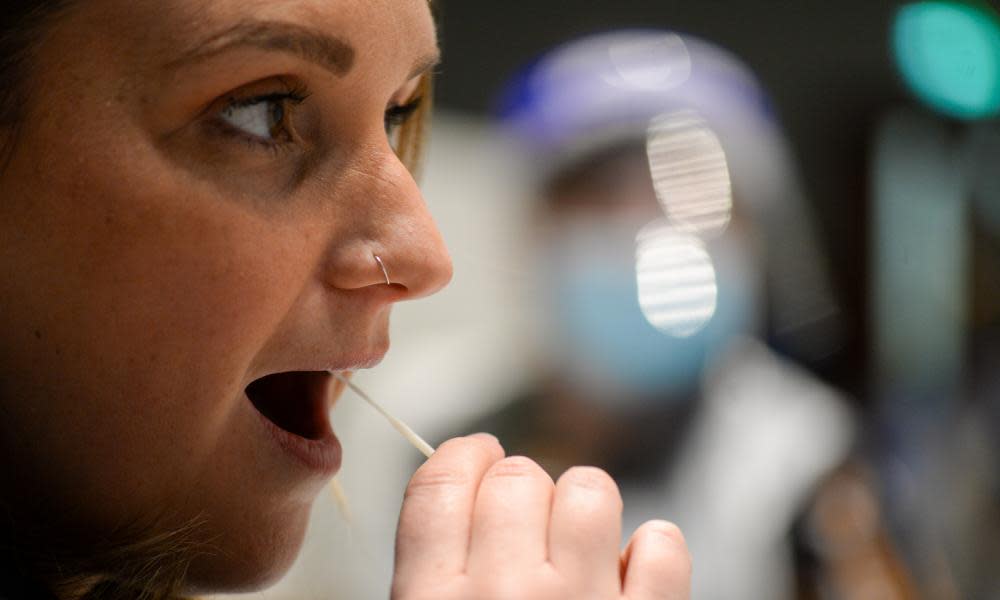Remember those NHS volunteers? We need them now in the fight against Covid

One key lesson from the Covid-19 pandemic is that the most effective way to stop a virus in its tracks is to identify and isolate cases. As we saw in China, South Korea, Taiwan and Vietnam, community health workers have been vital to this task.
Yet community health workers have been noticeably absent from Covid strategy in the UK. The British government prioritised a centralised, technology-led healthcare response over a decentralised public-health model focused on improving health and preventing the spread of the virus through education, infection surveillance and contact tracing. The consequences of this have been severe, as the UK saw case numbers spiral out of control and experienced prolonged lockdowns.
This was the inevitable outcome of a particularly “western” approach to health. Since the late 1970s, community health workers have been embraced across emerging economies to support public health. They’re responsible for educating families about disease prevention, promoting sanitation and ensuring the poorest people get access to life-saving immunisations and antibiotics. They also identify at-risk groups, often in the poorest sections of society, and ensure they receive financial support for isolation or cash incentives for vaccination. Evidence has shown that community-delivered interventions are highly effective in controlling malaria infections and suppressing viral loads in HIV infection. People don’t follow one-off messages from doctors and politicians but do respond to peer support, reminders, reassurance, encouragement on a daily basis and financial incentives.
In the UK, health education, community development teams and health visitors were driven to extinction as public health saw budgets cut by 13% between 2013 and 2019. A Nesta analysis of health-research spend in the UK revealed that 81% of funds are focused largely on laboratory research and drug treatments, whereas only 5% goes on researching ways to prevent poor health. Half of this funding went to university research projects located in the golden triangle of London, Oxford and Cambridge, rather than to population and public health studies in deprived parts of the country, where life expectancy is up to eight years lower.
It was this lab research that led to coronavirus vaccines and it should be celebrated, however this expertise is a necessary but not sufficient part of pandemic control. When the pandemic hit, not a single independent public health scientist was invited to sit on the Scientific Advisory Group for Emergencies (Sage). As a result, the importance of finding and isolating all cases and their contacts was downplayed and actually stopped as early as March 2020. When political pressure mounted against this decision a privatised test, trace and self-isolate system was implemented with no input from community health workers.
The government’s outsourced system has no links with primary care, no shared data, and no local staff. Much criticism has been levelled at the scheme’s limited effectiveness in tracing infections. To make matters worse, government support offered to those required to self-isolate has proven ineffective, in Manchester, more than half of those who applied for the one-off payment of £500 to help with self-isolation were turned down, and in Liverpool, three quarters of poorer families were rejected.
Conversely, South Korea used community health workers to establish 70 mobile testing sites in the two hardest-hit provinces and ensured compliance with self-isolation using daily mobile calls and an app to monitor GPS signals. In China, they rapidly mobilised one worker per 1,220 people in Wuhan to ensure households with any symptoms were tested and treated, with cases isolated and contacts traced.
To better prepare for the next pandemic, the UK will need to learn from these countries and better invest in its public health infrastructure. To provide England with one worker per 1,500 population would mean around five workers working alongside an average general practice. Within this team, two might be retired health workers coordinating reassuring calls to infected people and carrying out sensitive contact tracing, two locals trusted by vulnerable or hard-to-reach populations to assist with finding cases, and one worker with administrative skills to collate data and liaise with district public health teams. The UK has access to this people power: in March 2020, more than 750,000 people signed up to the NHS’s call for volunteers in just two days.
As the vaccination programme has shown, primary care networks can mobilise teams to achieve targets on a huge scale because they can access clinical data, have knowledge of vulnerable patients and, importantly, are trusted by the community. Community health workers further support this process by ensuring vaccine uptake remains high in hesitant groups, especially for booster shots needed to tackle new variants. We are already seeing this work being done by such workers in countries such as Bangladesh, China, India and Indonesia.
We will be living with this virus for years to come, and community health workers can help to identify future outbreaks quickly and beyond infection control, They could contribute to a reformed NHS by helping to identify and reduce Covid risk factors like obesity, diabetes, mental ill-health and destitution.
Healthcare isn’t just about providing the right treatments. It’s about preventing illness as best we can. If we can take anything from the pandemic, it is that the UK needs to rebuild its public health infrastructure so that the country is not only better prepared for the next outbreak, but healthier and happier too.
Anthony Costello is professor of global health and sustainable development at University College London and a former director of maternal and child health at the WHO

 Yahoo News
Yahoo News 
